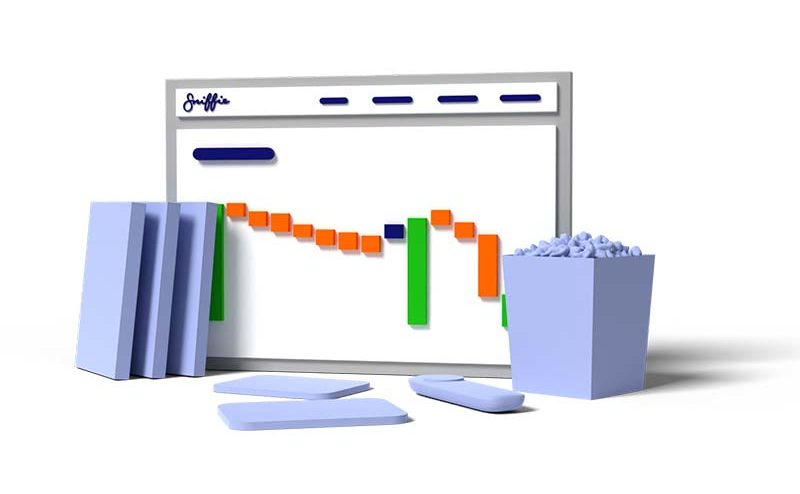Markup vs Margin: Two terms that often cause confusion. While they both relate to pricing and profit, they have distinct meanings and implications for your bottom line. In one sentence, markup is the difference between the selling price of a product and its cost, while margin is the percentage of profit derived from the selling price.
Let’s explore the distinctions between markup and margin in more detail and discuss how a clear comprehension of these concepts can empower you to make well-informed decisions for your business.
Markup: Definition and Formula
A markup represents the percentage of profit a business adds to the cost price of a product to determine the selling price. The formula for calculating markup is:
- Markup (%) = ((Selling Price – Cost Price) / Cost Price) * 100
Let’s break this down with an example. If you purchase a product for $50 and want to apply a 40% markup, the selling price would be:
- Markup = 40% = ((Selling Price – $50) / $50)
Solving for Selling Price:
- Selling Price – $50 = (40% * $50)
- Selling Price – $50 = $20
- Selling Price = $70
So, in this case, the selling price with a 40% markup on a $50 product would be $70.
Margin: Definition and Formula
Margin, on the other hand, is the percentage of profit a business makes relative to the selling price. It tells you what proportion of the selling price is profit. The formula for calculating margin is:
- Margin (%) = ((Selling Price – Cost Price) / Selling Price) * 100
To illustrate this concept, let’s use the same example as before. If you buy a product for $50 and sell it for $70, the margin would be calculated as follows:
- Margin = (($70 – $50) / $70) * 100 28.57% = (($70 – $50) / $70) * 100
So, with a selling price of $70 and a cost price of $50, your margin would be approximately 28.57%.
Download our Free Margin Calculator
Use our Margin Calculator to understand how your price is in line with your costs and preferred margin target.

Key Differences: Markup vs Margin
Now that we’ve defined both markup and margin let’s highlight the key differences between them:
- Calculation Base:
- Markup is calculated based on the cost price.
- Margin is calculated based on the selling price.
- Purpose:
- Markup is used to determine the selling price from the cost price.
- Margin is used to measure profitability as a percentage of the selling price.
- Relationship:
- Markup and margin are related but not interchangeable. You can’t directly convert one into the other.
Practical Implications
Understanding the differences between markup and margin is crucial for businesses, as it impacts pricing, profit, and financial decisions. Here are some practical implications:
- Pricing Strategy: When setting prices for your products or services, you may choose to use markup to ensure you achieve a desired profit percentage. Alternatively, you might focus on margin to ensure your profit aligns with your revenue.
- Competitive Analysis: Comparing your margin to your competitors’ can provide insights into your industry’s profitability. A lower margin might indicate higher cost efficiencies, but it could also mean lower profit per sale.
- Cost Control: Keeping a close eye on your cost price is essential for effective markup and margin management. Reducing costs can increase your profit margin, while raising selling prices can increase your markup.
Real-World Applications
To further understand the significance of markup vs margin, let’s consider some real-world applications:
- Retail: In the retail industry, businesses often apply a markup to products they purchase from wholesalers or manufacturers. This markup covers their operating costs and provides a profit margin. Retailers must carefully balance these percentages to remain competitive while ensuring profitability.
- E-commerce: E-commerce businesses frequently adjust their product prices based on both markup and margin considerations. This dynamic pricing strategy helps them respond to changing market conditions, demand fluctuations, and competitive pressures.
- Food and Beverage: Restaurants and cafes use markup and margin calculations to set menu prices. They consider the cost of ingredients and labor to determine the selling price while ensuring they maintain a healthy margin to cover overhead costs and generate profit.
- Manufacturing: Manufacturers use markup and margin to evaluate product lines and pricing strategies. It helps them decide which products are most profitable and whether they should adjust production costs or pricing to improve margins.
10 Tips for Effective Markup Pricing Management
Unlock the secrets of effective markup pricing management with our comprehensive guide featuring 10 practical tips to maximize profits and maintain competitiveness.

Using Markup and Margin in Your Business
Now that you understand the differences of markup vs margin and have seen how they are applied in various industries, let’s discuss how you can use these concepts in your own business.
- Pricing Flexibility: Understanding markup vs margin gives you flexibility in pricing. You can set prices based on your desired profit margins while remaining competitive in your market.
- Cost Control: Regularly reviewing your cost price and identifying cost-saving opportunities can boost your profit margin. Lower costs can either increase your margin or allow you to offer competitive prices with a higher markup.
- Strategic Planning: When creating a business plan or evaluating your financial performance, markup and margin data are essential. They help you make informed decisions about product lines, pricing strategies, and profitability targets.
- Benchmarking: Compare your markup and margin with industry standards to determine whether your business is competitive and profitable. If your numbers are below average, it may be time to reevaluate your pricing and cost structure.
Conclusion
Markup and margin are fundamental concepts in the world of business and finance, each serving a distinct purpose. While markup is used to calculate selling prices from cost prices, margin measures profitability relative to selling prices. Understanding these differences allows businesses to make informed pricing decisions, analyze their industry, and control costs effectively. By mastering these concepts, you can navigate the complex landscape of pricing and profit with greater confidence.
In summary, differentiating markup vs margin is essential for anyone involved in pricing, financial analysis, or business management. By leveraging these concepts effectively, you can strike a balance between profitability and competitiveness, ultimately ensuring the success of your business.



